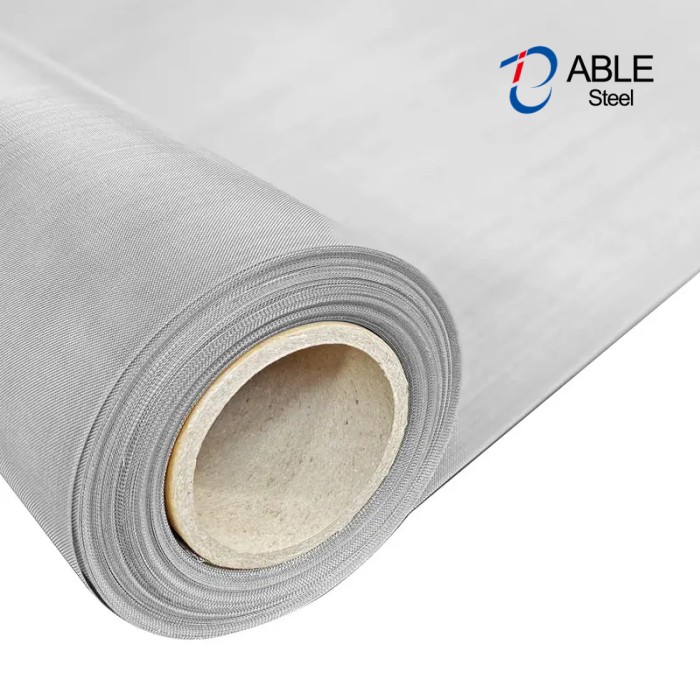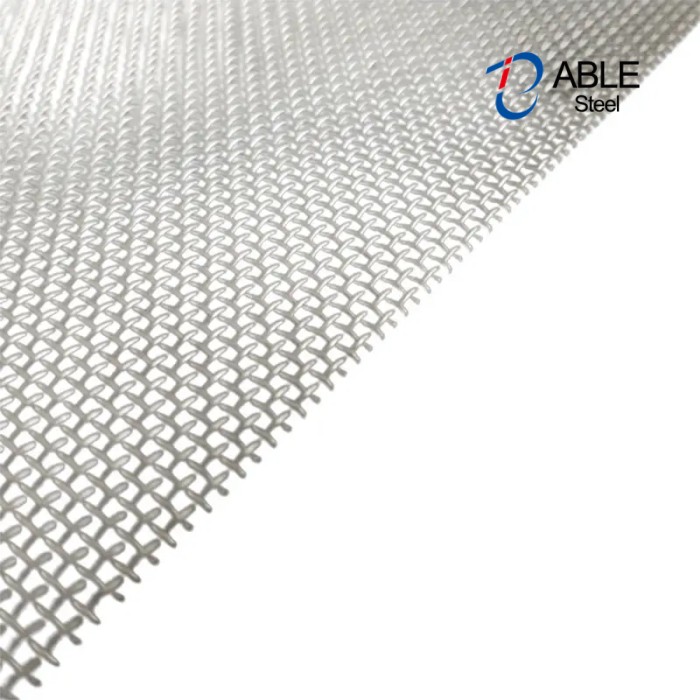Stainless Steel Wire mesh is a type of mesh made from stainless steel wires. It is commonly used in various applications due to its durability, strength, and corrosion resistance. Stainless steel WIRE MESH is woven using different weaving patterns, such as plain weave, twill weave, and Dutch weave. The weave pattern determines the mesh's appearance, strength, and filtration capabilities. This type of wire mesh is used in industries such as filtration, construction, automotive, aerospace, food processing, and pharmaceuticals. It is often used for sieving, filtering, screening, and separating applications. Stainless steel wire mesh is available in various grades and sizes to suit different requirements. It can be customized to meet specific needs, such as mesh count, wire diameter, and aperture size. Some common uses of stainless steel wire mesh include window screens, security screens, sieves, filters, conveyor belts, fencing, and architectural applications. It is also used in laboratories, research facilities, and industrial settings for its resistance to chemicals and high temperatures.
The production process of stainless steel wire mesh typically involves the following steps:
1. Raw material selection: High-quality stainless steel wires are chosen as the raw material for the production of wire mesh. The selection is based on factors such as the desired mesh size, wire diameter, and the application requirements.
2. Wire drawing: The selected stainless steel wires are drawn through a series of dies to reduce their diameter and improve their surface finish. This process ensures that the wires have the required strength and uniformity.
3. Wire annealing: The drawn wires are then subjected to annealing, which involves heating them to a specific temperature and then slowly cooling them. This process helps to relieve any internal stresses in the wires and enhance their ductility.
4. Wire weaving: The annealed wires are woven together using specialized weaving machines to create the desired mesh pattern. There are various weaving techniques used, such as plain weave, twill weave, and Dutch weave, depending on the specific application requirements.
5. Mesh inspection: The woven wire mesh is inspected for any defects or inconsistencies in terms of mesh size, wire diameter, and overall quality. Any defective or non-conforming mesh is discarded.
6. Mesh cutting and trimming: The woven wire mesh is cut into specific sizes and trimmed to remove any excess wires or uneven edges. This ensures that the final product meets the required dimensions and specifications.
7. Cleaning and surface treatment: The wire mesh is thoroughly cleaned to remove any contaminants or residues. It may also undergo surface treatments such as pickling or passivation to enhance its corrosion resistance or improve its appearance.
8. Final inspection and packaging: The finished wire mesh is inspected once again to ensure its quality and adherence to the required specifications. It is then carefully packaged and prepared for shipment or storage.
Overall, the production process of stainless steel wire mesh involves a combination of wire drawing, annealing, weaving, cutting, cleaning, and inspection steps to produce a high-quality and reliable product.


